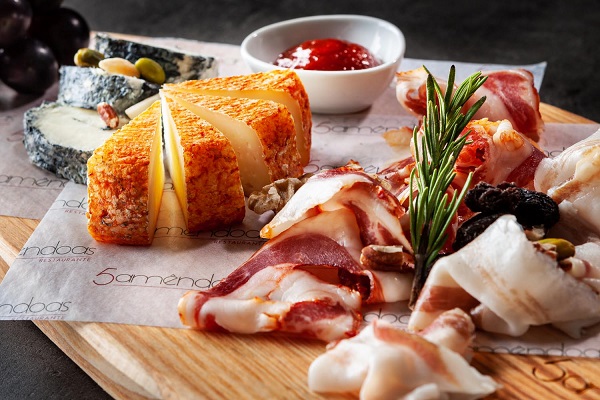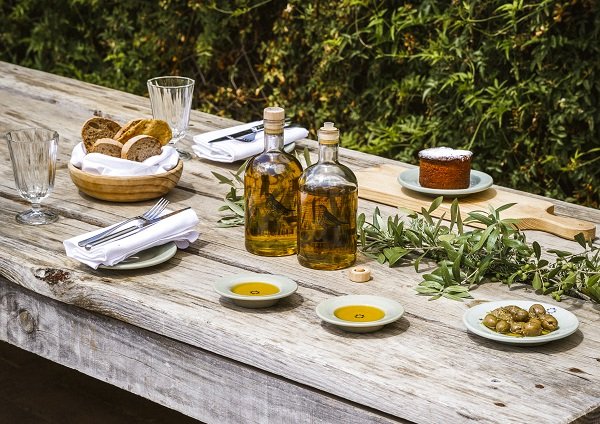The Mediterranean Diet, which for the fifth year in a row was named the best diet by US News & World Report, is part of the Portuguese culinary lexicon.
The Mediterranean diet is inspired by the dining habits of people who live near the Mediterranean Sea. First coined in the 1960s, the Mediterranean diet drew on the cuisines of Greece, Italy, and Spain, and grew to incorporate the cuisines of North Africa, France and Portugal. And, it is a diet that excels in being completely healthy and well balanced.
The diet is tied closely to the local agricultural output, as in fresh olive oil, vegetable, cereals, fruits and wines. Add to that local dairy products (sheep’s cheese and yogurt), and fish and low-fat meats (goat and sheep).
The Mediterranean diet is linked to longer, healthier lives, with less heart disease. Olive oil, for example, is a factor for reducing chronic diseases. That’s why the American Heart Association and American Diabetes Association recommend the Mediterranean diet as a healthy dietary pat-tern that may reduce the risk of cardiovascular diseases and type two diabetes, respectively.
The cuisine of the Alentejo is influenced by a Mediterranean climate and heritage. The Alentejo cuisine is unique in all of Portugal. It is a whole other world of flavors, where olive oil, cheese, a special kind of wheat bread baked only in Alentejo that also makes up traditional bread stews (açorda), local meats and fish all play the leading roles. The Alentejo breads are rich, crusty and wonderful. Not to mention the unique pastry and sweets created in monasteries and convents centuries ago. Or the variety of local wines produced in the varied climate and soils.


In the Alentejo, a meal starts with a variety of appetizers. Cured ham, or pata negra presunto from Barrancos is a local delicacy, and goat and sheep cheeses usually accompany the thin slices of cured ham from Nisa and Serpa. Olives are a staple, whether black or green, harvested from olive tree plantations in Moura or Esporão, off the Guadiana River Valley. And the piece de resistance of food traditions in Alentejo is the fresh bread dipped in olive oil, with a drop of vinegar.
Other Alentejo treats include roasted peppers, rabbit salad with onion and peppers seasoned with olive oil, and the hearty dish migas traditionally made using harder bread and fried pork ribs and loin. Some typical Alentejo foods share recipes with nearby Spain, as in the case of gazpacho, a tomato-based soup served cold.
As for the main course, meat and fish are 100% local and seasoned unlike anything elsewhere. On the one hand, the Carne Alentejana DOP and Mertolenga DOP are types of meat unique to the Alentejo, originating from locally raised lamb, pigs and even wild boar. One famed regional treat is Carne de Porco a Alentejana, or Alentejo style pork, which is a stew of pork cubes and clams, and lots of coriander. In fact, coriander is at the heart of Alentejo cuisine. The herb is most frequently used in the south of Portugal, just below the Tejo River line.
On the fish side, there are rich fish stews using cod, coastal fish and seafood. These recipes usually call for rice or potato, and all the ingredients swim in a delicious sauce combining tomato, garlic, onions and of course, olive oil.
But there are also traditional vegetarian options in Alentejo cuisine, such as asparagus and tomato migas and açorda from the Alentejo, a bread stew with poached egg and coriander. Contemporary variations of this dish also include shrimp or cod.
And we should mention two more things that are 100% Alentejo: Migas á Alentejana – a bread based stuffing that you have to try. And, Alentejo sausages are fantastic too, like the Azaruja pork sausage from Évora, and the thick paio sausages that vary from town to town.
No trip or flavor journey to the Alentejo is complete without desserts. Those with a sweet tooth, beware, because there are a lot of delicacies from the traditional egg and cinnamon pudding sericaia, to apple shortcakes, to pine nut nougat, to convent made patisserie and more.
In the Alentejo, an authentic meal can be found anywhere and from the humble taverna to our luxury options, there is no need to seek haute cuisine restaurants. The tastiest and most heart warming meals can be found in traditional (and affordable) eateries, where locals will treat you as if you were family. Cuisine and hospitality are always linked in the Alentejo, so come sit at the table and be delighted by the flavors of Portugal’s soul.
The Mediterranean diet, as in the Alentejo, offers the moderate consumption of dairy products, the use of local herbs for seasoning in place of salt, the consumption of wine only with meals, and companionship around the table. Indeed, the Portuguese love to share meals, bringing fami-ly and friends together.



